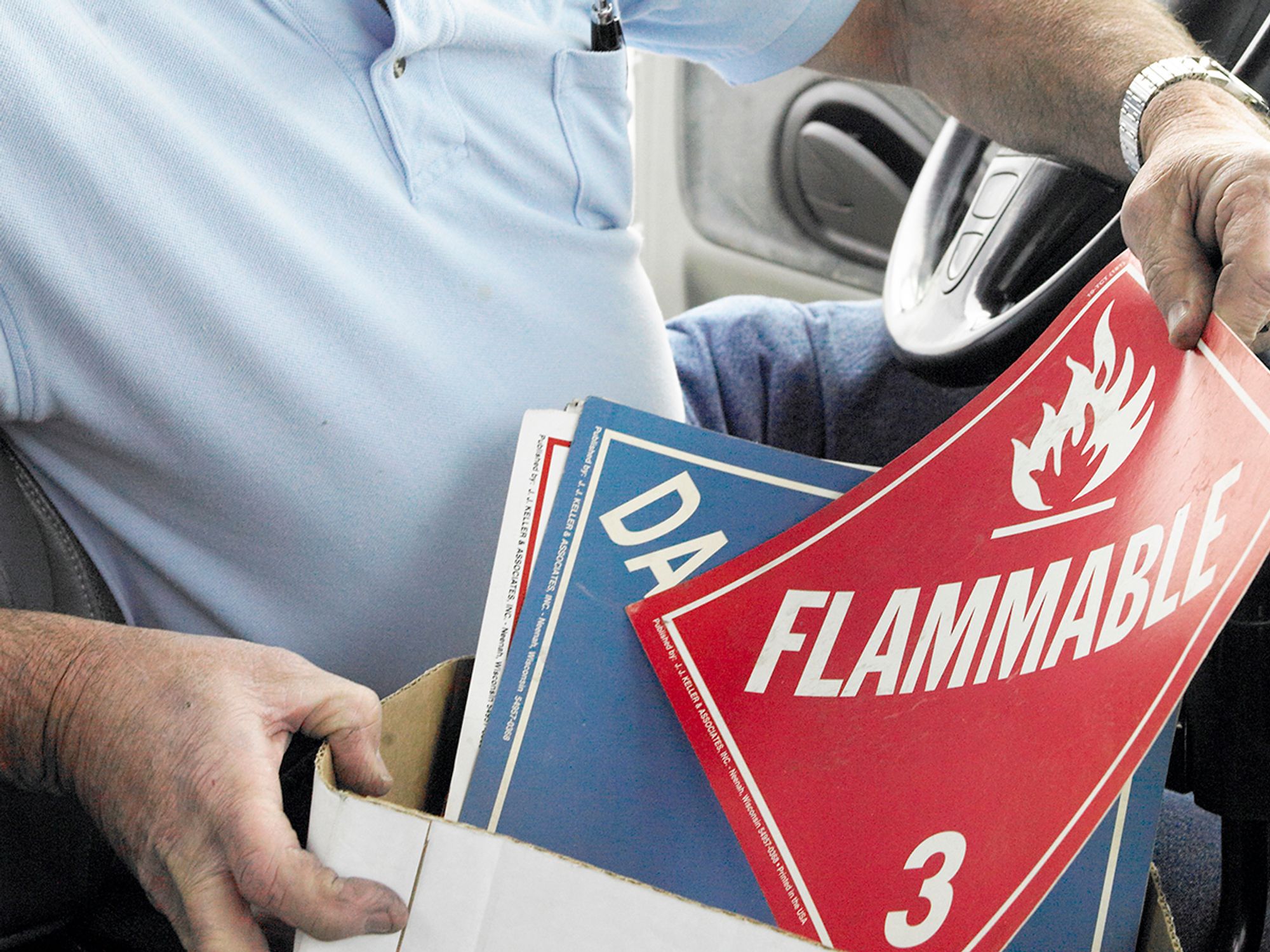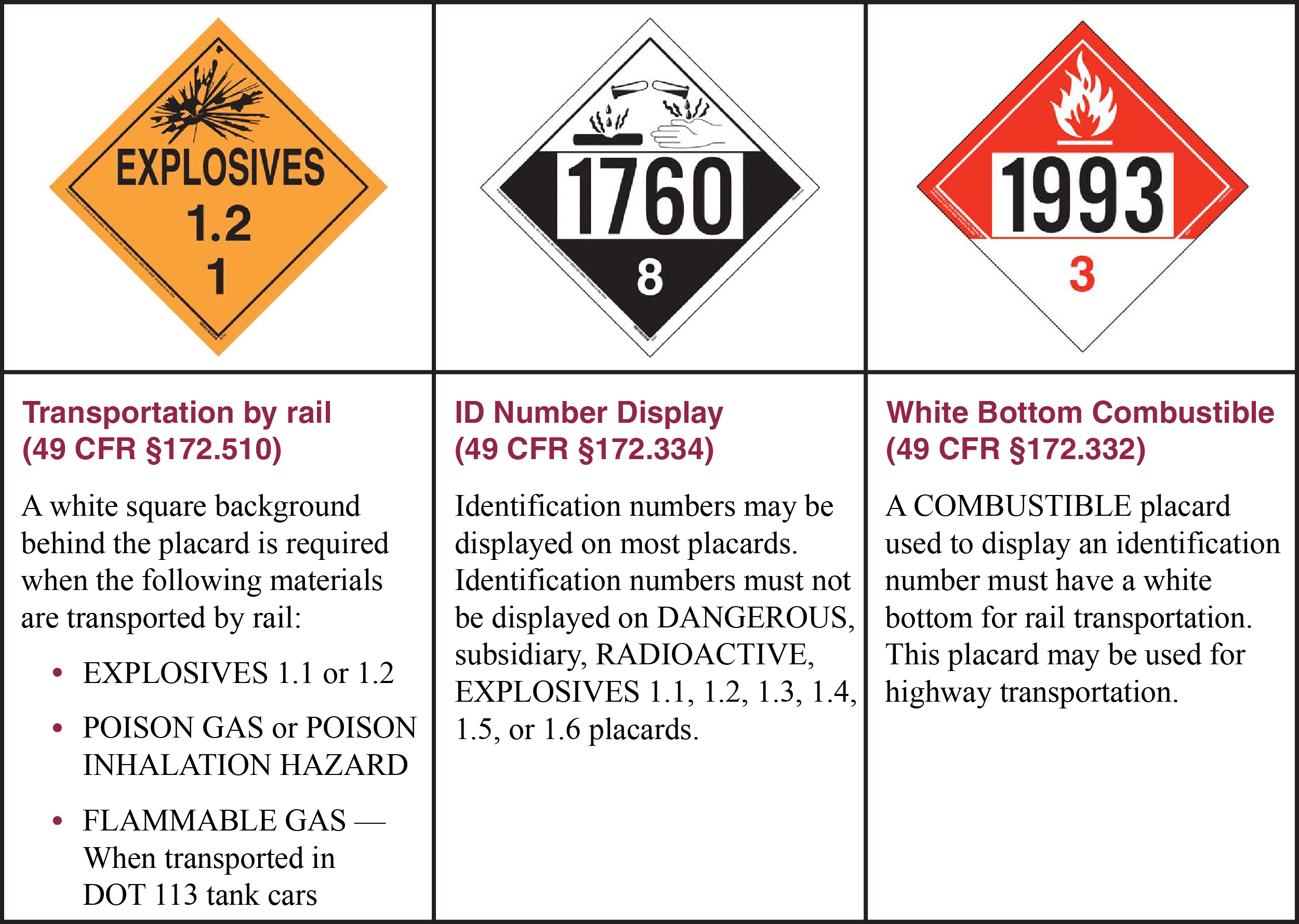Types of placards and placard specifications

- Primary and subsidiary placards may need to be displayed, depending on materials being transported.
- Every placard needs to adhere to several criteria in order to be fully compliant.
Primary and subsidiary placards
There are two types of placards:
- Primary placards indicate the primary hazard of the material, and
- Subsidiary placards indicate additional hazards the material possesses.
Generally, only primary placards are displayed. Section 172.505 of the Hazardous Materials Regulations (HMR) requires additional placards to be displayed under certain conditions for several subsidiary hazards. This includes “POISON GAS,” “POISON INHALATION HAZARD,” “POISON,” “CORROSIVE,” and “DANGEROUS WHEN WET.” Other subsidiary placards are permitted to be displayed but are not required.
Placard specifications
To be in compliance, all placards must meet the following specifications:
- Placards must be designed as specified in Part 172, Subpart F.
- Specifications for color must be as prescribed in Appendix A to Part 172.
- Placards must measure at least 9.84 inches (250 mm) on each side and have a solid-line inner border approximately 0.49 inches (12.5 mm) inside and parallel to the edge.
- Other than for the “RADIOACTIVE” or “DANGEROUS” placard, text indicating the hazard (e.g., “FLAMMABLE”) is not required. Text is not required on the “OXYGEN” placard only when an identification number is displayed.
- Placards may contain form identification information — including the name of the maker — if such information is printed outside of the solid-line inner border in no larger than 10-point type.
- Reflective and retro-reflective material may be used on a placard if color, strength, and durability requirements are maintained.
- Material used for placards may be any plastic, metal, or other material capable of withstanding, without deterioration or a substantial reduction in effectiveness, a 30-day exposure to open-weather conditions.
Tagboard placards must:
- Be of a quality at least equal to that designated commercially as white tagboard;
- Have a weight of at least 176 pounds (80 kg) per ream of 24 x 36 inches (610 mm x 910 mm), waterproofing materials included; and
- Be able to pass a 60 p.s.i. (414 kPa) Mullen test.
White square background
Transportation by highway (172.507)
A square background behind the placard is required when a motor vehicle is used to transport a highway route-controlled quantity of radioactive material.

